Pothos root rot is a serious problem that can affect your plants. The roots of your plant are the most important part of the plant, and if they are not healthy, the plant will not be able to grow. There are several sings of pothos root rot, including yellowing leaves, wilting, and stunted growth. The cause of pothos root rot is usually a fungus or bacteria that gets into the roots and starts to break down the tissue. Treatment for pothos root rot can be difficult, and often the best course of action is to remove the affected plant and start over.
How to Identify Pothos Root Rot?
Pothos root rot is a serious problem for pothos plants. There are several things you can do to identify pothos root rot. The roots of the plant become black and mushy, and the plant may eventually die.
You may also notice that the leaves of your plant are wilting or that the plant is not growing as vigorously as it once was. If they are black and mushy, it is likely that your plant has root rot. First, check the roots of your plant.
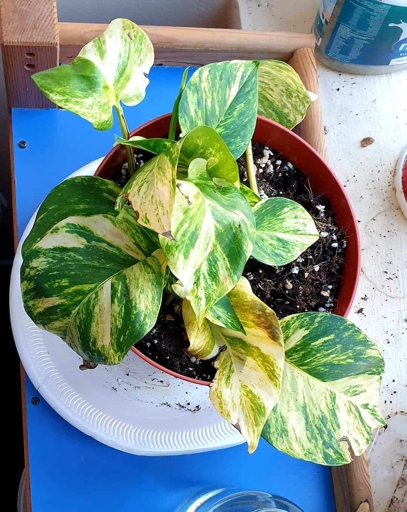
If you suspect that your plant has root rot, you should take it to a nursery or garden center for diagnosis. The staff there will be able to tell you for sure if your plant has root rot and can advise you on how to treat it.
If you think your plant may have root rot, don’t hesitate to get it checked out by a professional. Root rot is a serious problem, but it can be treated if it is caught early.
Roots are Soft and Brown
Pothos plants are known for their easy care and durability, but even these tough plants can succumb to root rot. Root rot is a common problem with pothos plants, and it can be caused by several different factors.
One of the most common causes of root rot is overwatering. Another common cause of root rot is using water that is too cold. Pothos plants like to be kept moist, but not soggy. If the roots of your pothos plant are sitting in water for too long, they will start to rot. Cold water can shock the roots of your pothos plant and cause them to rot.
If you think your pothos plant has root rot, the first thing you should do is check the roots. If the roots are severely rotted, you may need to remove the plant from its pot and replant it in fresh, sterile potting mix. They will be soft and brown, and may even have a foul smell.

With proper care, your pothos plant should recover from root rot and continue to thrive. Be sure to water your plant carefully, and don’t let the roots sit in water. If you catch root rot early, you may be able to save your pothos plant by trimming away the affected roots and replanting it in fresh potting mix.
Yellowing of Leaves
If you notice your pothos leaves starting to turn yellow, take a closer look at the plant to see if you can identify the problem. This can be caused by a number of factors, including too much sun, too little water, or even a nutrient deficiency. One of the most common problems with pothos plants is yellowing of the leaves.
Move the plant to a location with less direct sunlight and make sure to water it regularly. If the leaves are yellow and the stems are brown, this is a sign of root rot. This is a serious problem that can kill the plant, so it’s important to take action immediately. If the leaves are yellow and the stems are green, this is usually a sign of too much sun.

If the root rot is severe, you may need to treat the plant with a fungicide. Cut away any dead or dying roots, then replant the pothos in fresh, well-draining potting mix. Water the plant regularly and make sure the pot has good drainage. If you think your pothos plant has root rot, the first thing you should do is remove it from the pot.
With proper care, your pothos plant should recover and the leaves should return to their normal color. Yellowing leaves can also be caused by a nutrient deficiency. If you think this might be the problem, fertilize the plant with a balanced fertilizer and make sure to follow the directions on the package.
Dampness of Soil
It is important to know the dampness of your soil before planting anything. If the soil is too damp, it can lead to root rot. The soil should be moist, but not soggy.
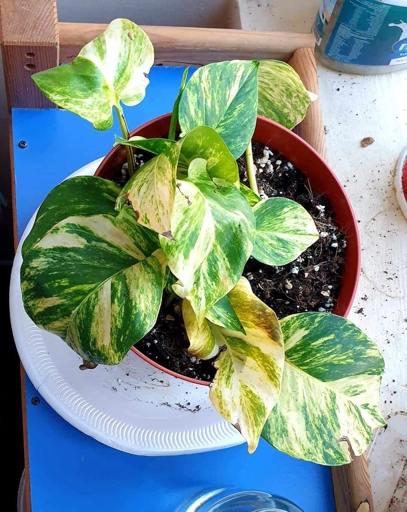
It is caused by too much moisture in the soil. Root rot is a serious problem that can kill your plants. The roots of the plant start to decay and the plant can no longer get the nutrients it needs.
If you think your plant has root rot, you should remove it from the pot and check the roots. If they are black and mushy, it is probably root rot. You can try to save the plant by replanting it in fresh, dry soil.
If your plant has root rot, it is important to take action quickly. The sooner you catch it, the better the chances are of saving your plant.
Fungus or Mold on Soil
If you notice your pothos plant wilting, despite watering it regularly, it may be a sign of root rot. The best way to treat root rot is to remove the affected roots and replant the pothos in fresh, sterile soil. Root rot is caused by a fungus or mold that attacks the roots of the plant, preventing it from absorbing water and nutrients.
Delayed Growth
Be sure to water the plant regularly and keep an eye on it for any further signs of root rot. Delayed growth is a common symptom of pothos root rot. This is because the roots of the plant are not able to absorb nutrients from the soil properly. You can then replant the pothos in fresh, sterile soil. The first step is to remove the affected roots. If you think your plant has pothos root rot, it is important to take action immediately. The plant may also have yellow or brown leaves.
What Causes Root Rot?
The plant will eventually die if the root rot is not treated. The cause of root rot is often a fungi or bacteria that enters the plant through the roots. Once the roots are infected, the plant will start to wilt and the leaves will turn yellow. If you think your plant has root rot, you should remove it from the pot and replant it in fresh, sterile soil. To prevent root rot, it is important to water your pothos plant regularly and make sure that the soil drains well. Root rot is a serious problem that can afflict pothos plants. There are several things that can cause root rot, including overwatering, poor drainage, and using contaminated soil.
Overwatering
If you think your plant may be overwatered, check for signs of water stress such as wilting, yellowing leaves, or stunted growth. These are all indicative of a plant that is not getting the proper amount of water. Pothos plants are very susceptible to root rot, especially if they are overwatered.
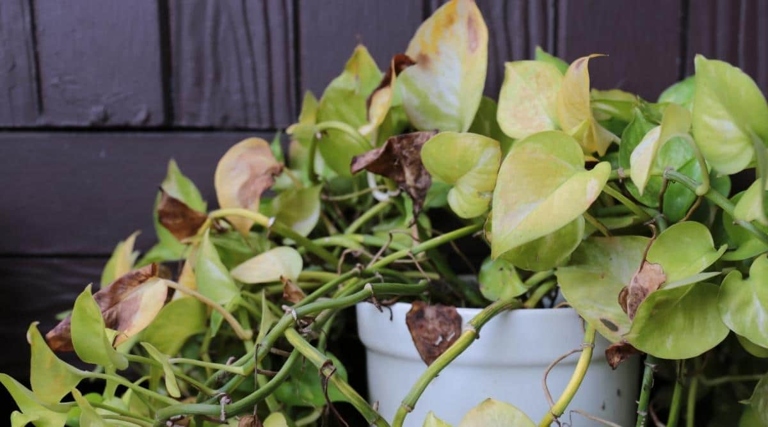
Allow the soil to dry out completely before giving it any more water. If you believe your plant is overwatered, the first step is to stop watering it immediately. Once the soil is dry, you can start watering your plant again, but be sure to water it deeply and less frequently to avoid root rot.
Once you have removed the rotten roots, replant your pothos in fresh, dry soil and be sure to water it properly from now on. If your plant is already showing signs of root rot, you can try to save it by carefully removing it from the pot and removing any rotten roots.
Poor Drainage Capacity of Soil
There are several things that can cause poor drainage capacity in soil, including: This can lead to the roots rotting and the plant dying. The soil around the roots of pothos plants becomes waterlogged and can no longer drain properly. Pothos root rot is a common problem for gardeners.
– compaction of the soil
– build-up of organic matter
– poor aeration
This can make it difficult for water to penetrate the soil and reach the roots of plants. Compaction of the soil can be caused by heavy equipment or vehicles driving over it. Build-up of organic matter can also prevent water from draining properly. Poor aeration can be caused by soil that is too dense or has a high clay content. This can happen if there is too much mulch or compost around the base of the plant. This can make it difficult for oxygen to reach the roots, which can lead to root rot.
These include: There are several things that gardeners can do to improve the drainage capacity of their soil.
– aerating the soil

– adding organic matter
– using raised beds
Adding organic matter can also help to improve drainage by increasing the porosity of the soil. This can be done by adding compost or mulch to the soil around the base of the plant. Using raised beds can also help to improve drainage by allowing water to drain away from the roots of the plant. Aerating the soil can help to improve drainage by breaking up compacted soil and improving aeration.
Poor Drainage in Pots
Pothos plants are susceptible to root rot, which is often caused by poor drainage in pots. If the roots are black and mushy, they are probably rotten. To prevent root rot, make sure to plant pothos in a pot with good drainage and avoid overwatering. You can try to save the plant by trimming away the rotten roots and replanting it in a new pot with fresh soil, but it is often difficult to revive a plant that has suffered from root rot. If you think your plant has root rot, remove it from the pot and inspect the roots. Root rot can be difficult to treat and often results in the death of the plant. The roots of pothos plants are very sensitive to waterlogged conditions and will quickly start to rot if the pot does not have good drainage.
Extra-large/small Pots
If you’re growing pothos in a pot that’s too large, the roots may start to rot. The best way to prevent this is to choose a pot that’s the right size for your plant. This is because the roots are sitting in too much water and not getting enough oxygen.
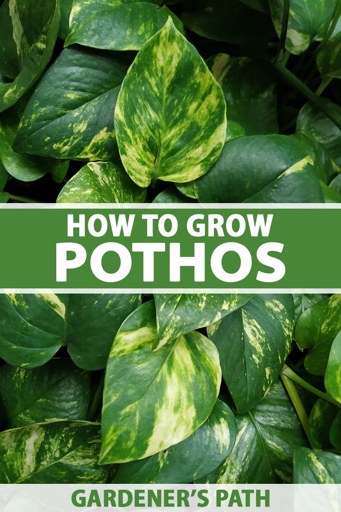
If your pot is too small, your plant may not have enough room to grow. The roots may start to crowd the pot and the plant may start to wilt. If you’re having trouble finding a pot that’s the right size, you can always make your own.
Pathogenic Infections
Treatment of pathogenic infections often requires antibiotics. Symptoms of pathogenic infections can include fever, chills, diarrhea, vomiting, and weight loss. Pathogenic infections are one of the leading causes of death in the world. They are caused by pathogenic microorganisms, which are tiny organisms that can cause disease. Pathogenic infections can be spread through the air, water, food, or contact with infected animals or people.
Extremely Low Temperature
Pothos plants are known to be tough and resilient, but they can succumb to root rot if they are not cared for properly. Symptoms of root rot include yellowing leaves, wilting, and stunted growth. Root rot is caused by a build-up of water in the soil, which can happen if the plant is overwatered or if the pot does not have adequate drainage. If left untreated, root rot can kill a pothos plant.
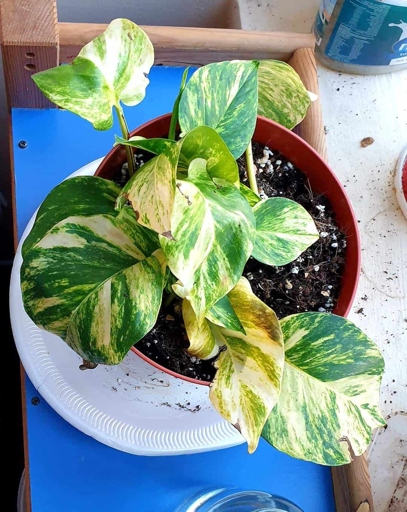
If you suspect your plant has root rot, you can try to save it by repotting it in fresh, dry soil. To prevent root rot, make sure to water your pothos plant only when the soil is dry to the touch. If the plant is in a pot without drainage holes, be sure to empty the saucer after each watering.
Watering on Dormant Periods
Watering on dormant periods can cause the roots to rot, which can eventually kill the plant. Pothos plants are known to be very resilient, but they can still suffer from root rot if they are not cared for properly. One of the most common mistakes people make when caring for pothos plants is watering them during their dormant periods.
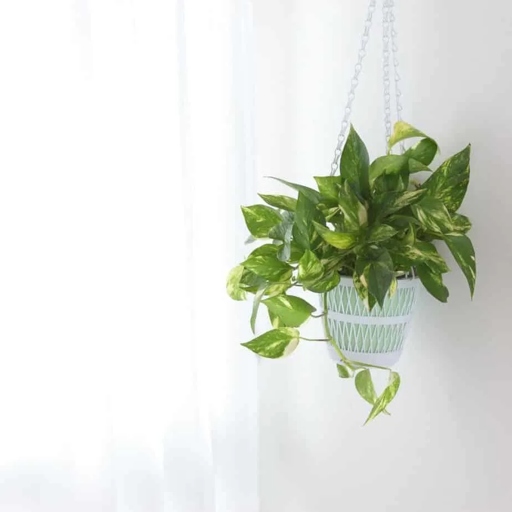
Pothos plants are susceptible to root rot, especially if they are watered on dormant periods.
If you think your pothos plant is suffering from root rot, the first thing you should do is check the roots. Be sure to water the plant properly from now on and avoid watering on dormant periods. If they are brown and mushy, then it is likely that the plant has root rot. With proper care, your pothos plant should recover and thrive. The best course of action is to remove the plant from its pot and replant it in fresh soil.
Overfertilization
Overfertilization is one of the most common problems when it comes to growing pothos. The best way to avoid overfertilization is to only fertilize your pothos when it is actively growing and to use a light hand. When this happens, the leaves of the plant will begin to yellow and the plant will eventually start to die back. This is because pothos are such vigorous growers and can easily outpace the nutrients available to them in the soil. If you do notice that your pothos is starting to yellow, you can try flushing the soil with water to remove some of the excess nutrients.
How to Save Pothos from Root Rot
If you see signs of root rot, such as yellowing leaves or mushy roots, cut away the affected roots and replant in fresh, well-draining soil. To save your plant from root rot, start by improving its drainage. If you’re growing pothos in a pot, make sure it has drainage holes in the bottom. Pothos plants are susceptible to root rot, which can be caused by overwatering or poor drainage. Water the plant deeply, but allow the soil to dry out between waterings.
Repotting
Pothos plants are typically very easy to care for, but one thing they do require is to be repotted every one to two years. This is because as they grow, their roots begin to take up more and more space in the pot, which can eventually lead to root rot.
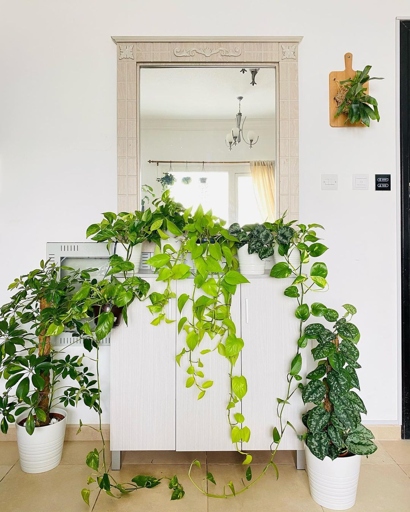
This will help to prevent the roots from becoming too pot-bound. Be sure to use a well-draining potting mix, as pothos plants are susceptible to root rot if their roots are constantly wet. When repotting, be sure to use a pot that is only slightly larger than the current one.
This will help to prevent the roots from becoming waterlogged. Once you have repotted your pothos plant, be sure to water it well and then allow the soil to dry out slightly before watering again.
Watering after Repot
Be sure to check the soil before watering, and only water when the soil is dry. If you’ve just repotted your pothos, you’ll need to water it more frequently than usual. Over-watering can lead to root rot, so it’s important to be careful. Once the roots have settled in, you can water your pothos less frequently. The roots are still adjusting to their new environment, and they need extra water to help them transition.
Care After Repotting
When you repot your pothos, it is important to take care of the roots. Here are some tips to help you avoid root rot: Pothos root rot is a common problem that can occur if the roots are not cared for properly.
-Make sure the roots are dry before you repot.
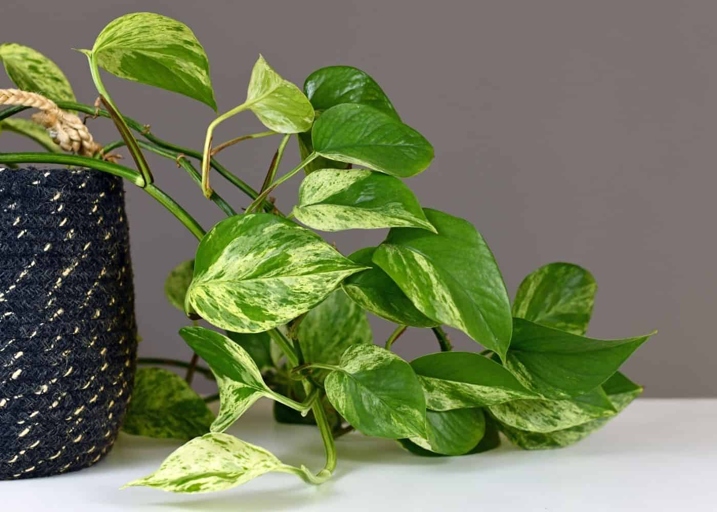
-Add a layer of gravel or sand to the bottom of the pot to help with drainage.
-Do not over-water your pothos. Water only when the soil is dry to the touch.
-Fertilize your pothos every two weeks during the growing season.
By following these tips, you can help your pothos avoid root rot and stay healthy.
Propagate
To propagate in water, cut a piece of stem that has at least 2 leaves on it. Once the roots are a few inches long, you can transplant the cutting into soil. Change the water every few days. You can propagate them in water or soil. Pothos plants are very easy to propagate. After a few weeks, you will see roots growing from the stem. Place the stem in a jar or glass of water.

To propagate in soil, cut a piece of stem that has at least 2 leaves on it. Cover the pot with plastic wrap or a lid to create a humid environment. Once the roots are a few inches long, you can transplant the cutting into soil. After a few weeks, you will see roots growing from the stem. Place the stem in a pot of moistened potting mix.
How to Prevent and Control Pothos Root Rot?
Pothos root rot is a serious problem that can kill your plant. There are several things you can do to prevent and control it.

Pothos roots are very sensitive to wet conditions and will rot if they stay too wet for too long. If you’re growing pothos in a pot, make sure it has drainage holes in the bottom and use a well-draining potting mix. First, make sure your plant is getting enough drainage.
Water your pothos when the top inch or two of soil is dry. Second, avoid overwatering. It’s better to err on the side of too dry than too wet.
Remove the plant from its pot and inspect the roots. Third, if you think your plant has root rot, take action immediately. If they’re mushy or black, you’ll need to cut away the affected roots and repot the plant in fresh, dry soil.
By following these tips, you can help prevent and control pothos root rot.
Avoid Waterlogging
Waterlogging is the main cause of root rot in pothos plants. This can lead to the roots decaying and the plant dying. Pothos plants are susceptible to root rot, which can be caused by overwatering. When the roots of a pothos plant are waterlogged, they are unable to get the oxygen they need to function properly.

If you think your plant may be waterlogged, try to gently remove it from the pot and check the roots. To avoid waterlogging, make sure the pot you are using has drainage holes and that you are not overwatering your plant. Allow the soil to dry out between waterings. If they are mushy or black, they are probably rotted and you will need to start over with a new plant.
Set Up a Watering Schedule
Watering pothos too much can lead to root rot, which can kill the plant. If you want to keep your pothos plant healthy, it is important to set up a watering schedule.
If the leaves start to droop, that is a sign that the plant needs water. Allow the soil to dry out completely between watering. Watering pothos once a week should be sufficient.
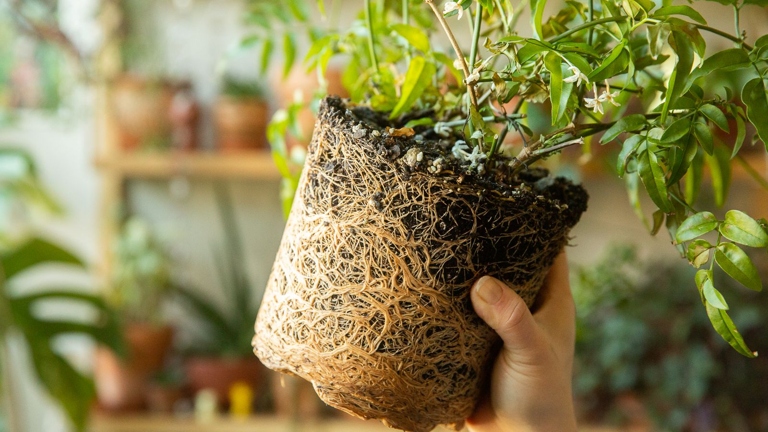
Cut away any affected roots and repot the plant in fresh, dry soil. If you think your pothos plant has root rot, it is important to take action immediately.
Loosen the Soil
The most common cause is Phytophthora cinnamomi, which is a soil-borne pathogen that attacks the roots of many different plants. Pothos root rot is a common problem that can be caused by several different fungi. This pathogen is often found in poorly drained soils, and it can be spread by water or by contaminated tools.
Pothos root rot can also be caused by Pythium species, which are water-borne pathogens that attack the roots of many different plants. These pathogens are often found in poorly drained soils, and they can be spread by water or by contaminated tools.
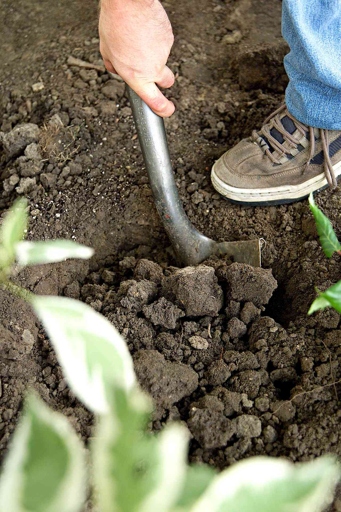
Pothos root rot can be difficult to control, and it is often necessary to remove infected plants from the soil. If you suspect that your plant has root rot, it is important to take it to a professional for diagnosis and treatment.
Implement Plant Rotation
This helps to ensure that the plant gets the proper amount of sunlight and air circulation, and also helps to prevent the build-up of pests and diseases in the soil. One way to help prevent root rot in pothos plants is to implement a plant rotation schedule. Plant rotation can be a bit of a hassle, but it’s worth it to keep your pothos plants healthy and thriving. This involves moving pothos plants to different areas of the house or garden every few months.
Treat the Soil with Fungicide
Pothos root rot is a common problem for gardeners. The best way to prevent it is to treat the soil with fungicide.
It is important to apply fungicide to the soil before planting pothos. Fungicide will kill the fungi that cause pothos root rot. This will help to prevent the fungi from infecting the plant.
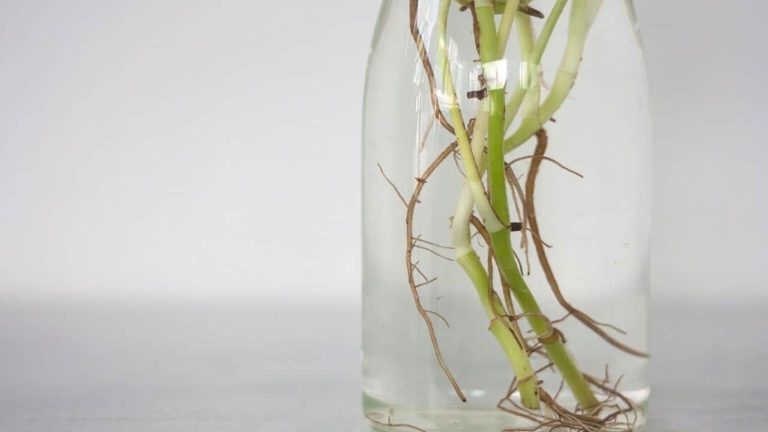
Once pothos root rot has started, it is difficult to treat. The best way to deal with it is to remove the affected plant from the soil and dispose of it. This will help to prevent the spread of the disease to other plants.
Do Not Overfertilize
If the plant does not recover, you may need to replant it. However, one of the most common problems with pothos plants is root rot. Let the plant dry out and then start watering again. Pothos plants are very popular houseplants because they are easy to care for. This is not the case with pothos plants. Too much fertilizer will cause the roots to rot. Overfertilizing is a common problem because people think that more fertilizer is better. Root rot is caused by too much water and/or too much fertilizer. If you think your pothos plant has root rot, the first thing you should do is stop fertilizing.
Ensure Care Requirements
Pothos plants are susceptible to root rot, which can be caused by overwatering or by sitting in water. If you suspect that your plant has root rot, remove it from the pot and inspect the roots. Cut away any rotted roots and repot the plant in fresh, dry soil. If the roots are black or mushy, they are likely rotted. To prevent root rot, ensure that the plant is not sitting in water and that the soil is not overly wet.
Will Pothos with Root Rot Recover?
However, if you catch it early enough, there is a chance that your plant can recover. Root rot is a serious condition that can kill your plant. If you have a pothos with root rot, you may be wondering if it can be saved.
This can be a difficult task, as the roots are often intertwined. Once you have removed the affected roots, you will need to replant your pothos in fresh, sterile soil. To save your plant, you will need to remove all the affected roots.
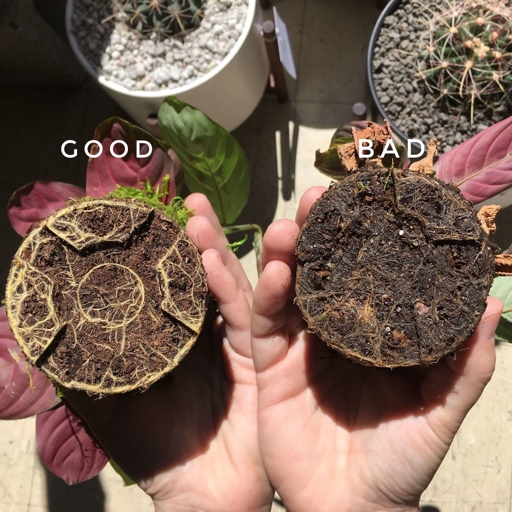
With proper care, your pothos should be able to recover from root rot. If you see any new signs of root rot, you will need to remove the affected roots immediately. It is important to keep an eye on your plant during the recovery process.
Frequently Asked Questions
1. What is pothos root rot?
Pothos root rot is a type of fungal infection that affects the roots of the pothos plant. The fungus enters the plant through the roots and spread to the stem, leaves, and flowers. The infection causes the plant to wilt and the leaves to turn yellow and fall off.
2. What are the symptoms of pothos root rot?
The symptoms of pothos root rot include wilting, yellowing leaves, and leaf drop. The plant may also have brown or black spots on the leaves. The infection can spread to the stem and flowers, causing them to wilt and turn brown.
3. What causes pothos root rot?
Pothos root rot is caused by a type of fungus called Phytophthora. The fungus enters the plant through the roots and spread to the stem, leaves, and flowers.
4. How can I prevent pothos root rot?
There are a few things you can do to prevent pothos root rot. Make sure to plant your pothos in well-draining soil and water it regularly. Avoid overwatering the plant, as this can make the roots more susceptible to fungal infections. If you notice any of the symptoms of pothos root rot, remove the affected parts of the plant immediately.
5. How can I treat pothos root rot?
Unfortunately, once your pothos plant is infected with root rot, there is no treatment. The best thing you can do is to remove the affected parts of the plant and dispose of them. You can also try to prevent the infection from spreading by cutting away any affected leaves, stems, or flowers.
Final thoughts
Pothos root rot is a serious problem that can kill your plant. If you think your plant has root rot, it’s important to act quickly. Treat root rot by removing the affected roots and replanting in fresh, sterile potting mix. Be sure to water your plant carefully and keep an eye out for new signs of root rot.
